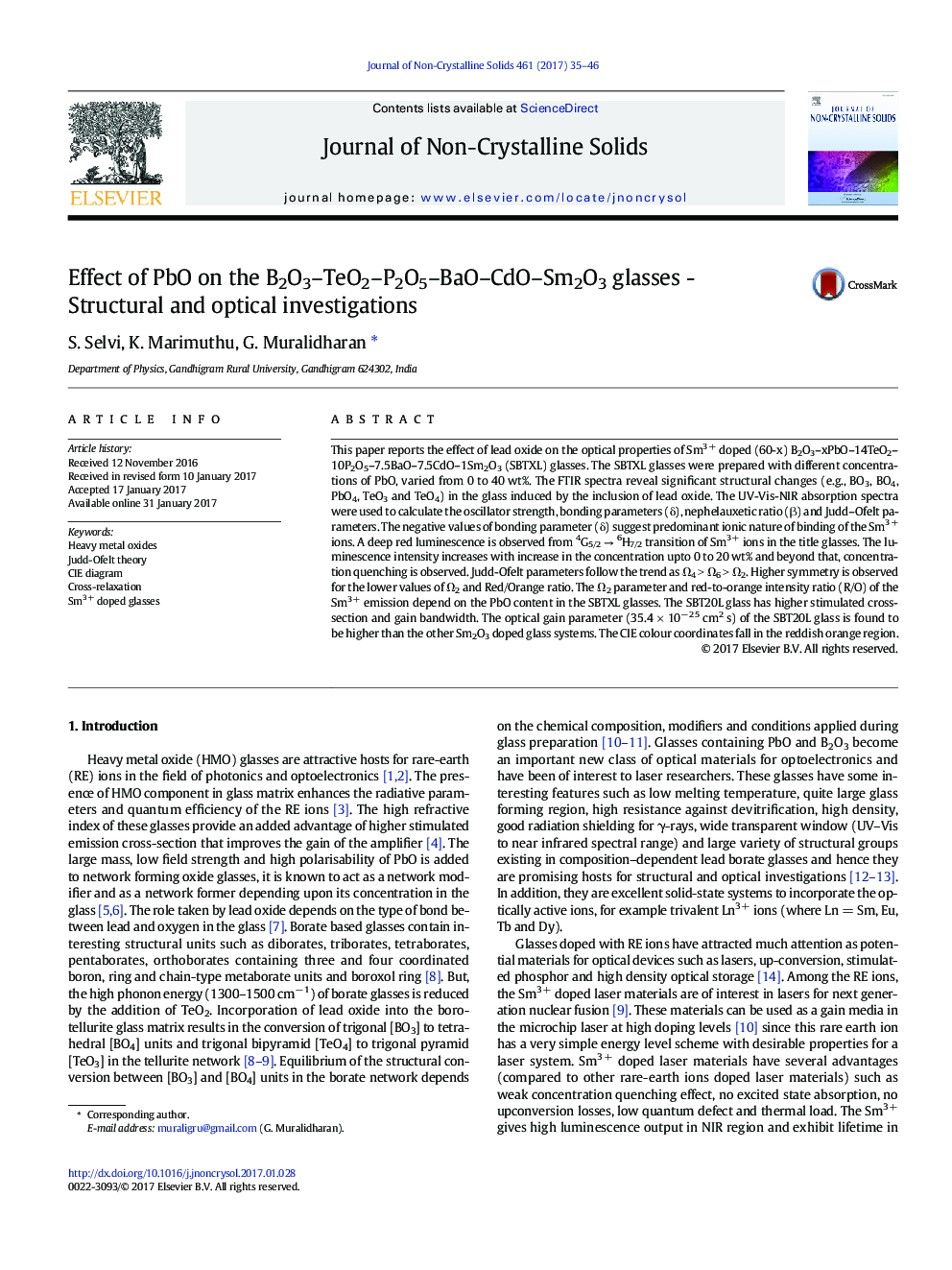| Article ID | Journal | Published Year | Pages | File Type |
|---|---|---|---|---|
| 5441358 | Journal of Non-Crystalline Solids | 2017 | 12 Pages |
Abstract
This paper reports the effect of lead oxide on the optical properties of Sm3 + doped (60-x) B2O3-xPbO-14TeO2-10P2O5-7.5BaO-7.5CdO-1Sm2O3 (SBTXL) glasses. The SBTXL glasses were prepared with different concentrations of PbO, varied from 0 to 40 wt%. The FTIR spectra reveal significant structural changes (e.g., BO3, BO4, PbO4, TeO3 and TeO4) in the glass induced by the inclusion of lead oxide. The UV-Vis-NIR absorption spectra were used to calculate the oscillator strength, bonding parameters (δ), nephelauxetic ratio (β) and Judd-Ofelt parameters. The negative values of bonding parameter (δ) suggest predominant ionic nature of binding of the Sm3 + ions. A deep red luminescence is observed from 4G5/2 â 6H7/2 transition of Sm3 + ions in the title glasses. The luminescence intensity increases with increase in the concentration upto 0 to 20 wt% and beyond that, concentration quenching is observed. Judd-Ofelt parameters follow the trend as Ω4 > Ω6 > Ω2. Higher symmetry is observed for the lower values of Ω2 and Red/Orange ratio. The Ω2 parameter and red-to-orange intensity ratio (R/O) of the Sm3 + emission depend on the PbO content in the SBTXL glasses. The SBT20L glass has higher stimulated cross-section and gain bandwidth. The optical gain parameter (35.4 Ã 10â 25 cm2 s) of the SBT20L glass is found to be higher than the other Sm2O3 doped glass systems. The CIE colour coordinates fall in the reddish orange region.
Related Topics
Physical Sciences and Engineering
Materials Science
Ceramics and Composites
Authors
S. Selvi, K. Marimuthu, G. Muralidharan,
